engine CHEVROLET TRACKER 1998 1.G User Guide
[x] Cancel search | Manufacturer: CHEVROLET, Model Year: 1998, Model line: TRACKER, Model: CHEVROLET TRACKER 1998 1.GPages: 386, PDF Size: 21.17 MB
Page 11 of 386
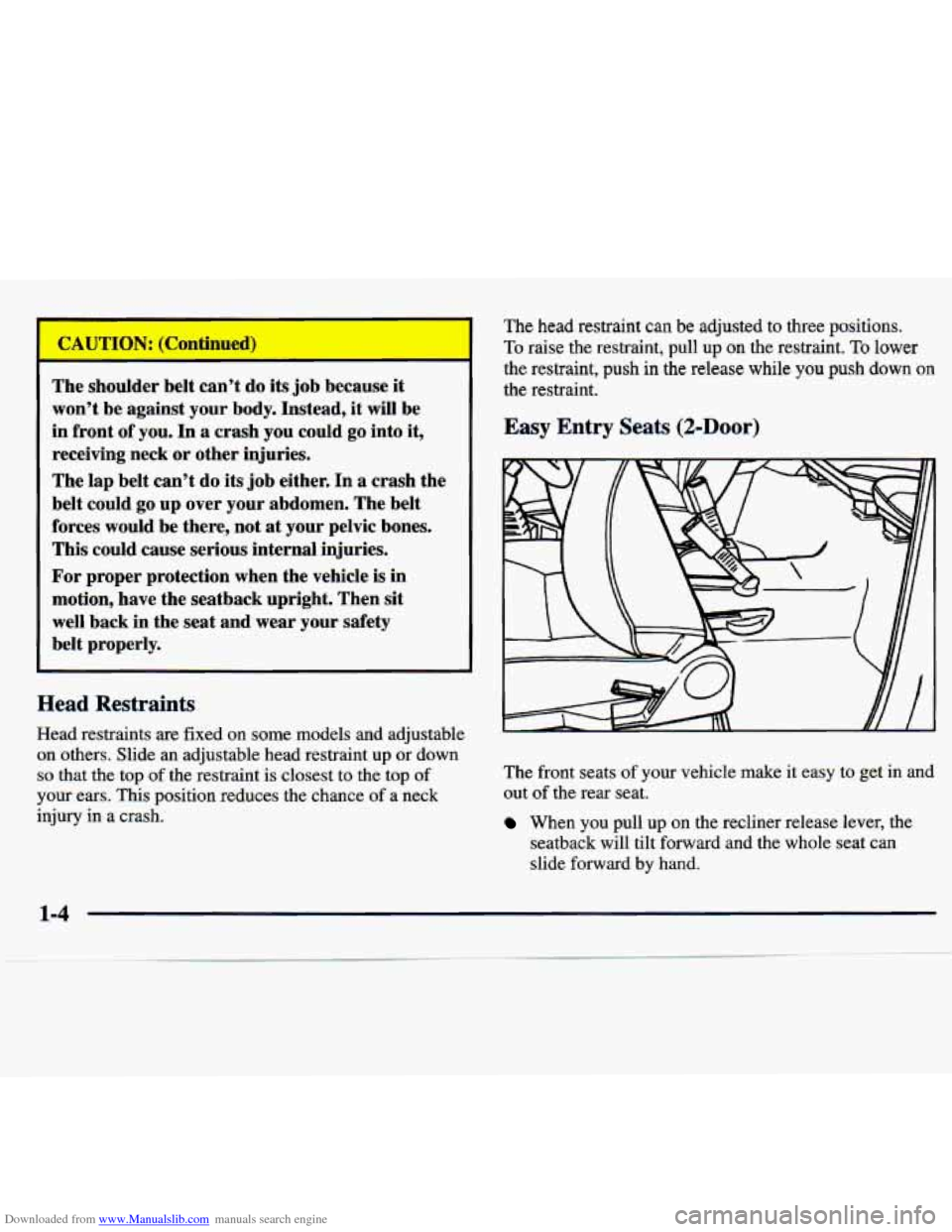
Downloaded from www.Manualslib.com manuals search engine The shoulder belt can’t do its job because it
won’t be against your body. Instead, it will be
in front
of you. In a crash you could go into it,
receiving neck
or other injuries.
The lap belt can’t do its job either.
In a crash the
belt could
go up over your abdomen. The belt
forces would be there, not at your pelvic bones.
This could cause serious internal injuries.
For proper protection when the vehicle is in
motion, have the seatback upright. Then sit well back in the seat and wear your safety
belt properly.
Head Restraints
Head restraints are fixed on some models and adjustable
on others. Slide an adjustable head restraint
up or down
so that the top of the restraint is closest to the top of
your ears. This position reduces the chance of a neck
injury in
a crash. The
head restraint
can be adjusted to three positions.
To raise the restraint, pull up on the restraint. To lower
the restraint, push in the release while you push down on
the restraint.
Easy Entry Seats (2-Door)
The front seats of your vehicle make it easy to get in and
out
of the rear seat.
When you pull up on the recliner release lever, the
seatback will tilt forward and the whole seat can slide forward
by hand.
1-4
Page 12 of 386
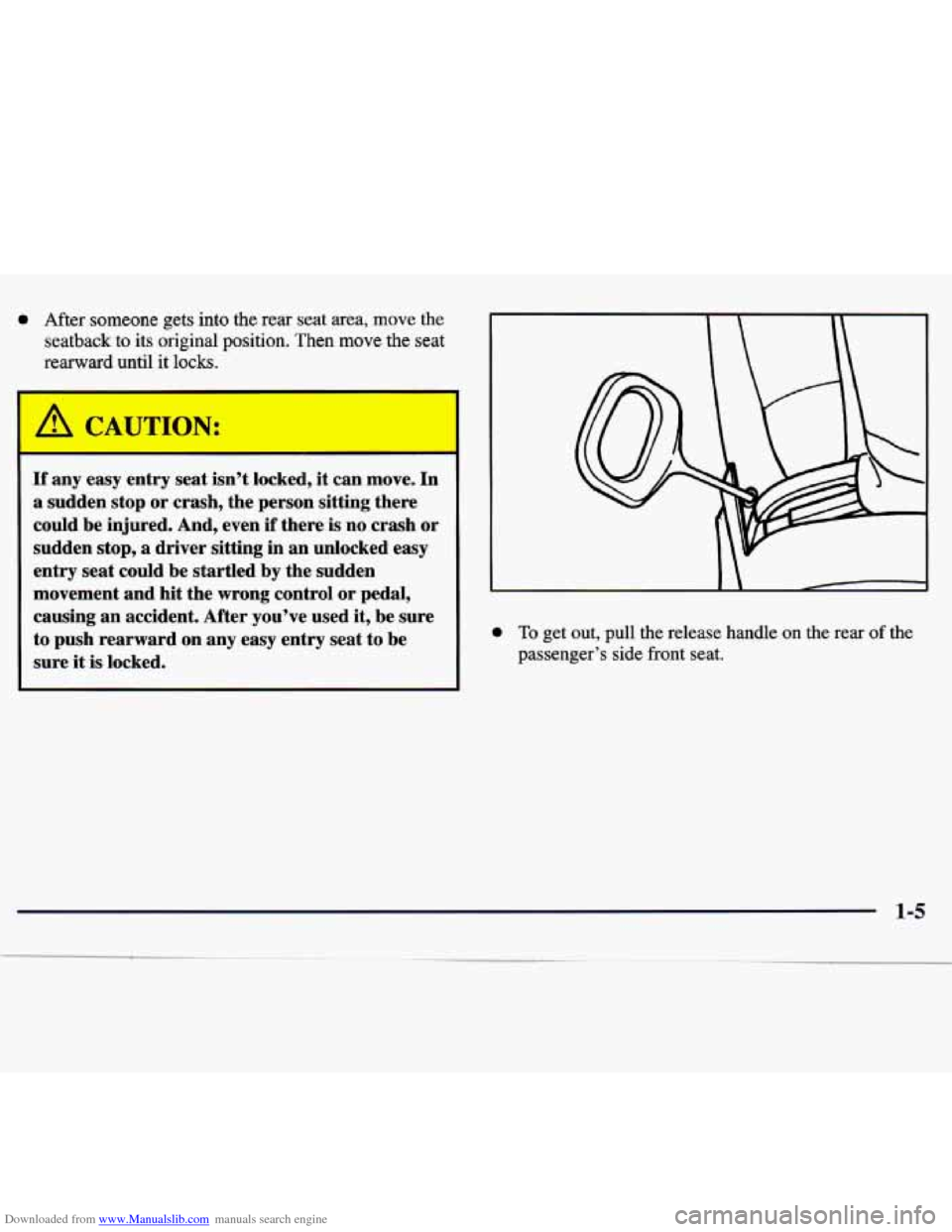
Downloaded from www.Manualslib.com manuals search engine 0 After someone gers into the rear seat area, move the
seatback
to its original position. Then move the seat
rearward until it locks.
PL CL TJT’ON:
- I
.If any easy entry seat isn’t locked, it can move. In
a sudden stop or crash, the person sitting there
could be injured. And, even
if there is no crash or
sudden stop,
a driver sitting in an unlocked easy
entry seat could be startled by the sudden
movement and hit the wrong control or pedal,
causing an accident. After you’ve used it, be sure
to push rearward on any easy entry seat to be
sure it is locked.
I I
0 To get out, pull the release handle on the rear of the
passenger’s side front seat.
1-5
Page 13 of 386
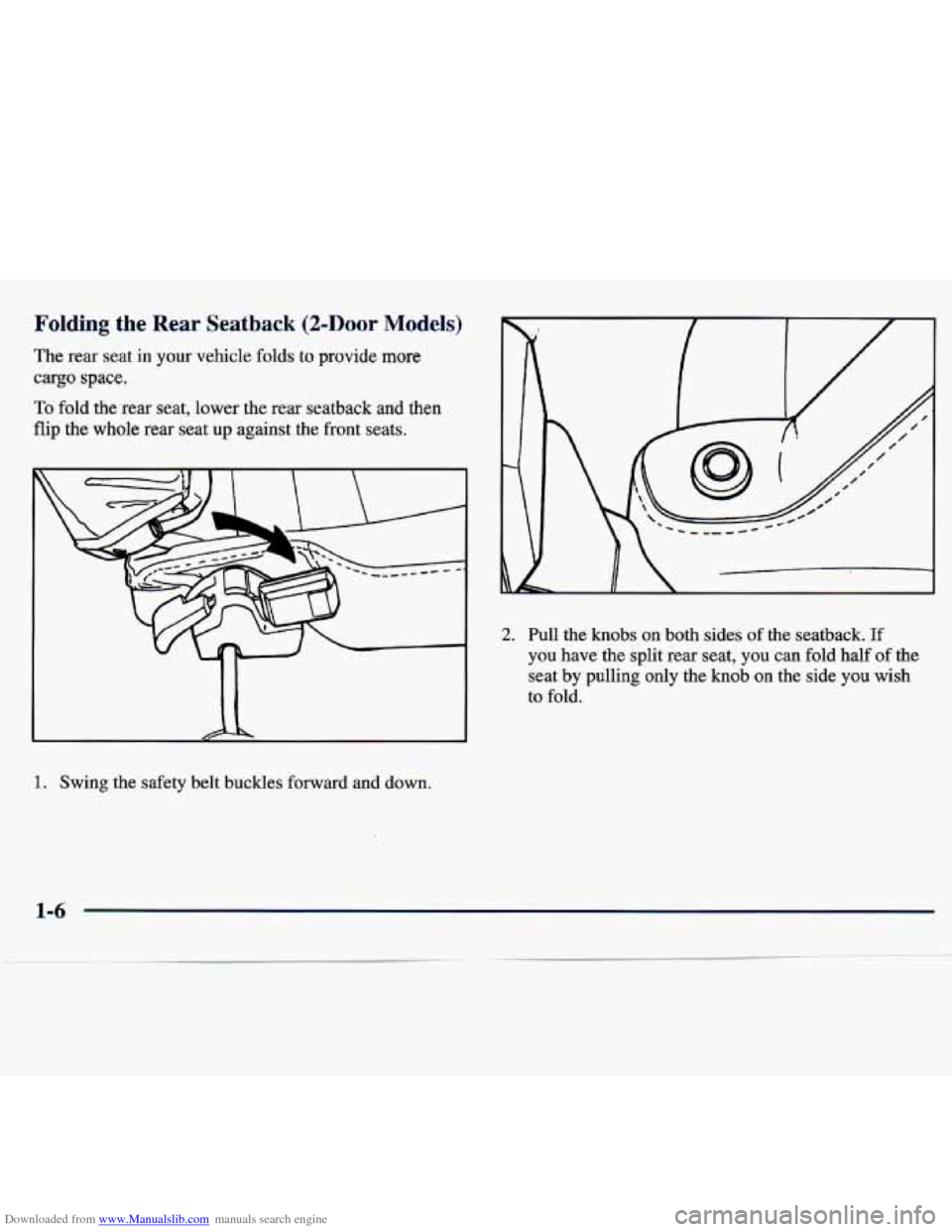
Downloaded from www.Manualslib.com manuals search engine Folding the Rear Seatback (2-Door Models)
The rear seat in your vehicle folds to provide more
cargo space.
To fold the rear seat, lower the rear seatback and then
flip
the whole rear seat up against the front seats.
1. Swing the safety belt buckles forward and down.
2. Pull the knobs on both sides of the seatback. If
you have the split rear seat, you can fold half of the
seat by pulling only the
knob on the side you wish
to fold.
1-6
Page 14 of 386
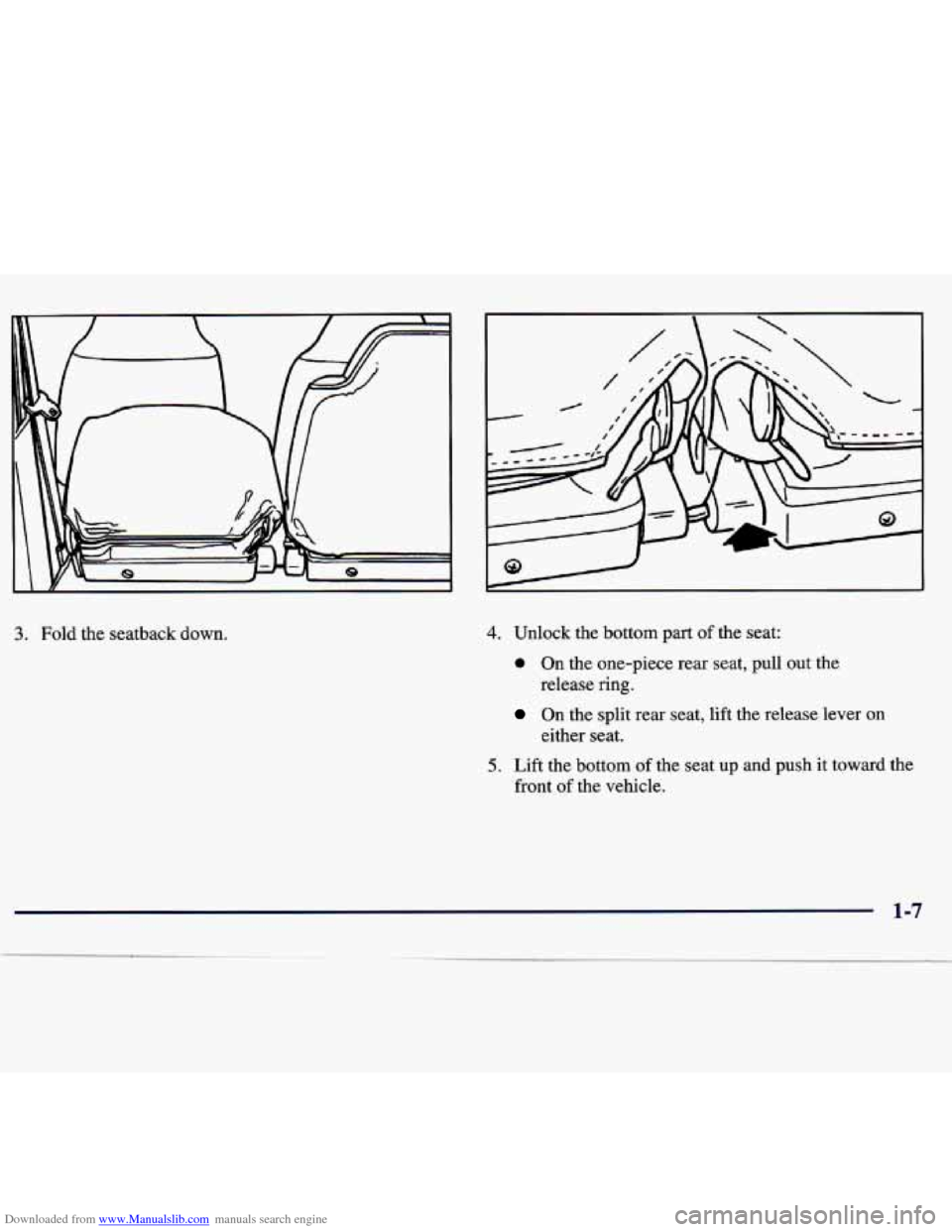
Downloaded from www.Manualslib.com manuals search engine 3. Fold the seatback down. 4.
5.
Unlock the bottom part of the seat:
0 On the one-piece rear seat, pull out the
On the split rear seat, lift the release lever on
release ring.
either seat.
Lift the bottom
of the seat up and push it toward the
front
of the vehicle.
1-7
Page 15 of 386

Downloaded from www.Manualslib.com manuals search engine 6. Find the support bar on the bottom of the seat. This
bar keeps
the rear seat from unfolding.
8. Attach the support bar to the floor bracket.
7. Pull the inner end of the support off of the seat
bracket and swing it down.
1-8
Page 16 of 386
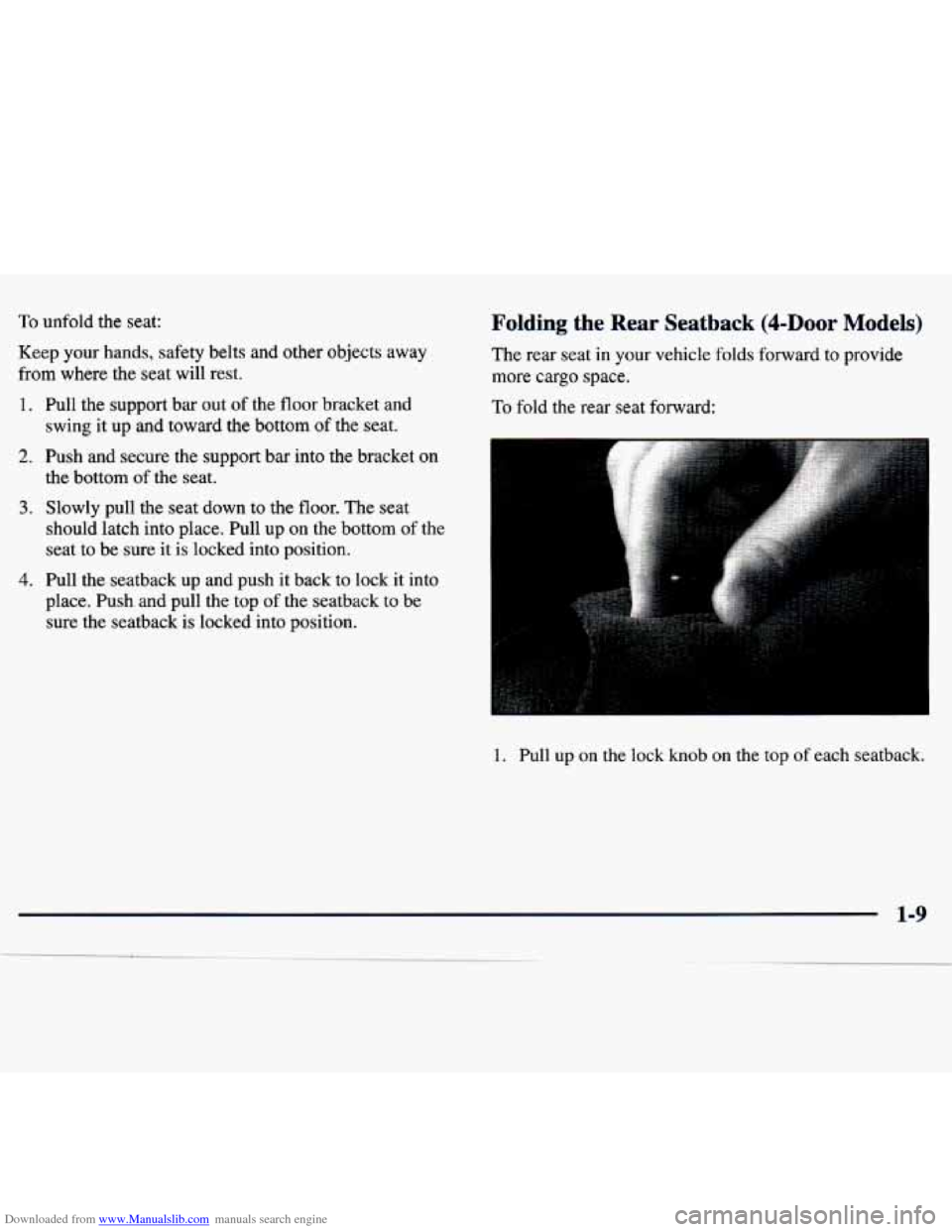
Downloaded from www.Manualslib.com manuals search engine To unfold the seat:
Keep your hands, safety belts and other objects away
from where the seat will rest.
1. Pull the support bar out of the floor bracket and
swing it up and toward the bottom
of the seat.
2. Push and secure the support bar into the bracket on
the bottom
of the seat.
Folding the Rear Seatback (4-h~ Models)
The rear seat in your vehicle folds forward to provide
more
cargo space.
To fold the rear seat forward:
3. Slowly pull the seat down to the floor; The seat
should latch into place. Pull up on the bottom
of the
seat to be sure it is locked into position.
4. Pull the seatback up and push it back to lock it into
place. Push and pull the top
of the seatback to be
sure the seatback is locked into position.
1. Pull up on the lock knob on the top of each seatback.
1-9
Page 17 of 386
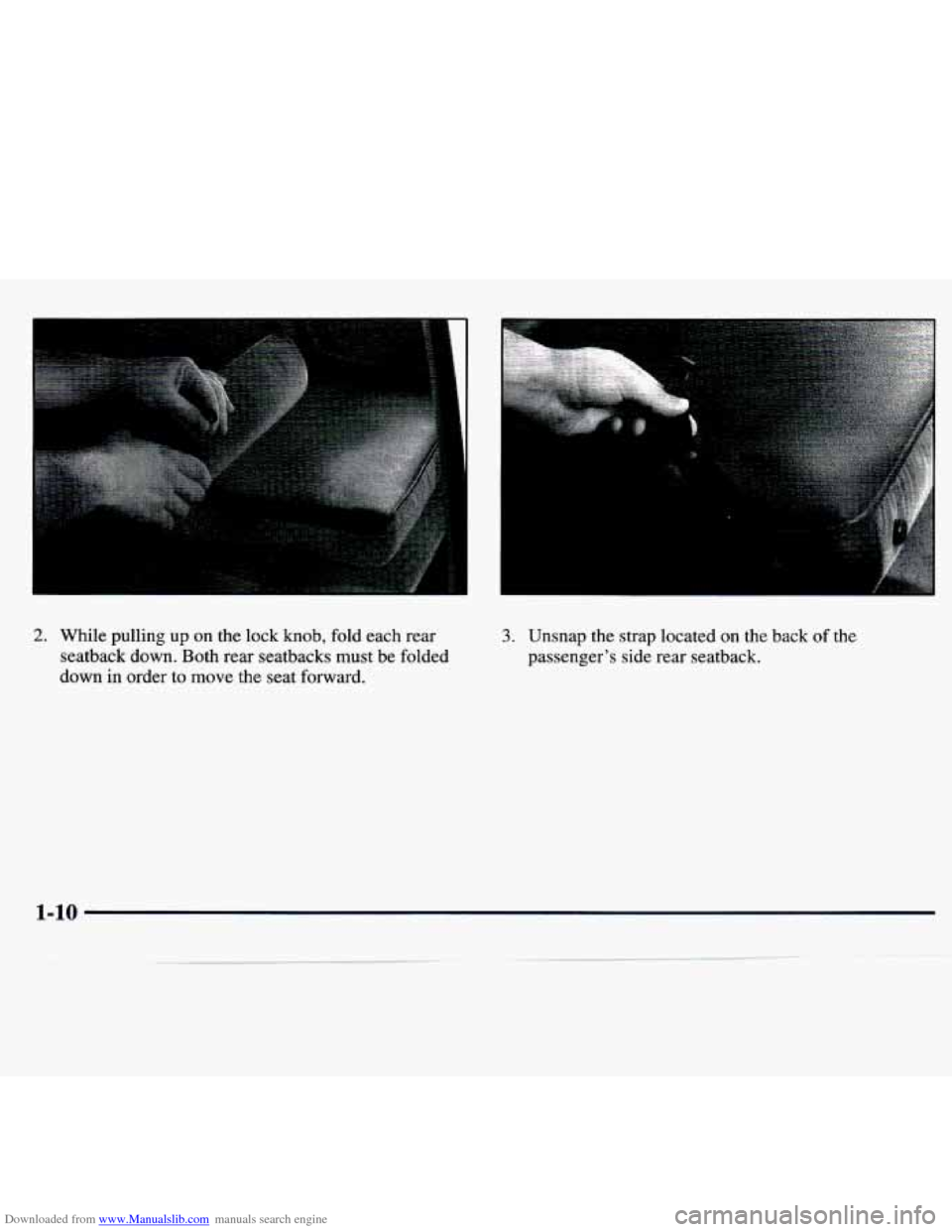
Downloaded from www.Manualslib.com manuals search engine 2. While pulling up on the lock knob, fold each rear
seatback down. Both rear seatbacks must be folded
down
in order to move the seat forward.
3. Unsnap the strap located on the back of the
passenger’s side rear seatback.
1-10
Page 18 of 386
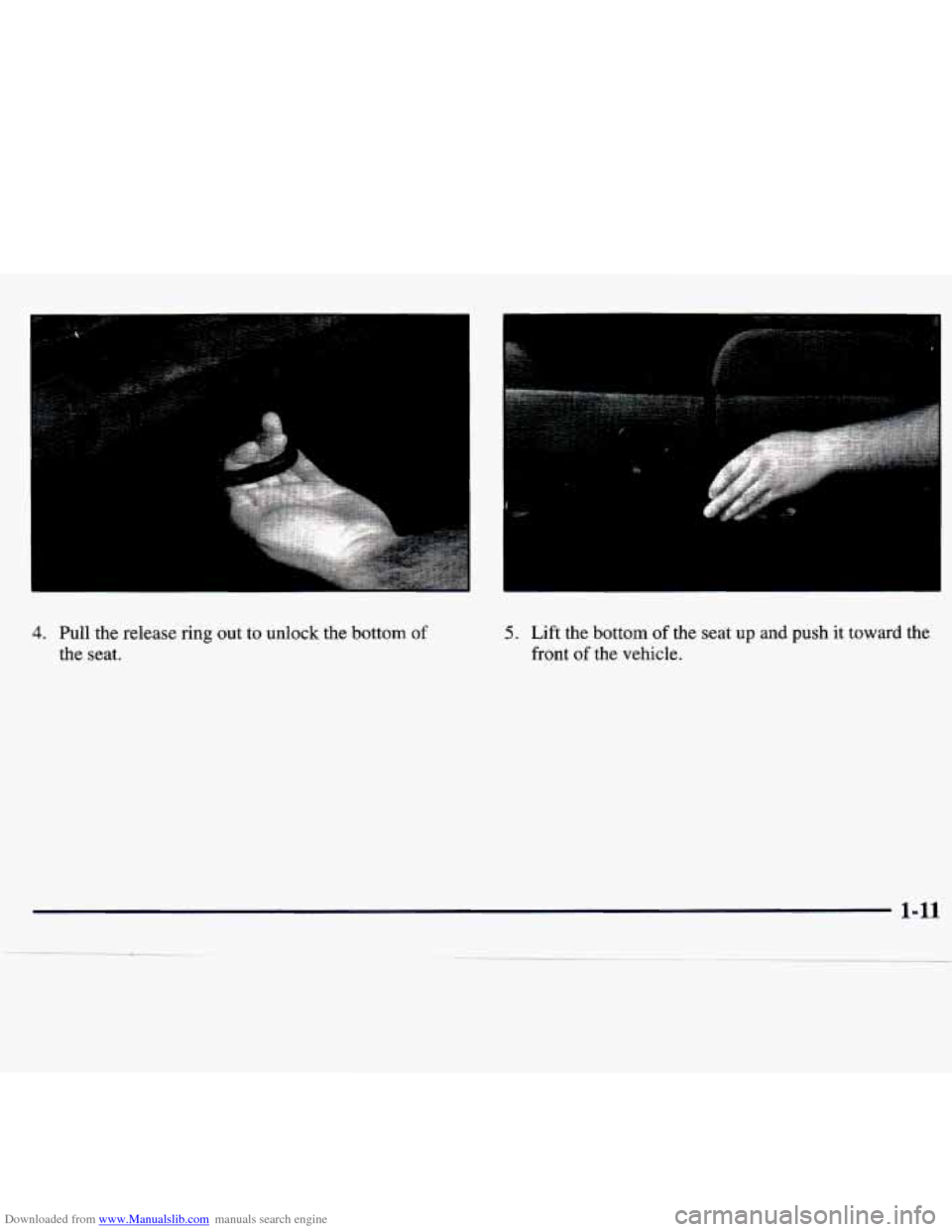
Downloaded from www.Manualslib.com manuals search engine 4. Pull the release ring out to unlock the bottom of
the seat.
5. Lift the bottom of the
front of the vehicle.
-
seat up and push it toward the
1-11
Page 19 of 386
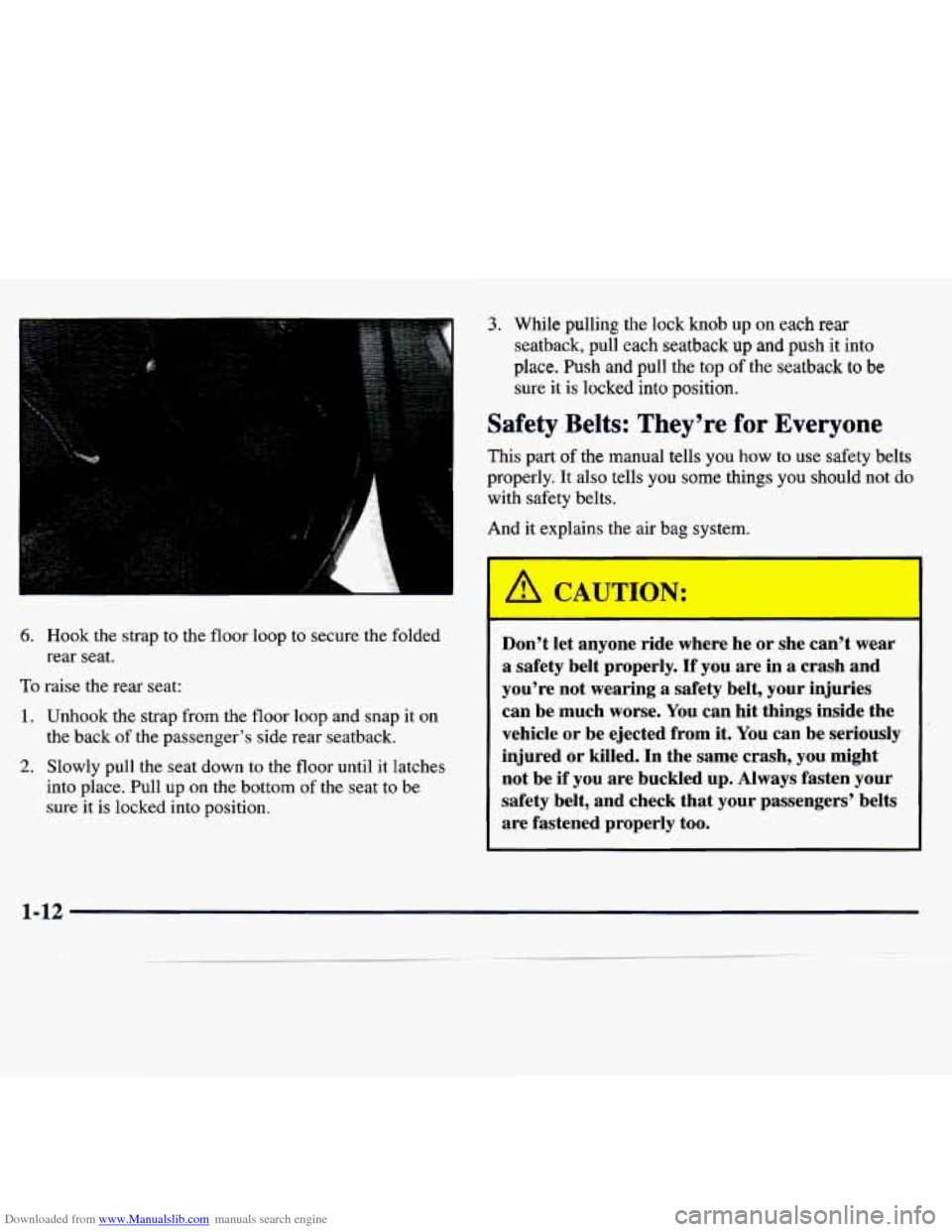
Downloaded from www.Manualslib.com manuals search engine 3. While pulling the lock knob up on each rear
seatback, pull each seatback up and push it into
place.
Push and pull the top of the seatback to be
sure it is locked into position.
1 Safety Belts: They’re for Everyone
This part of the manual tells you how to use safety belts
properly. It also tells
you some things you should not do
with safetv belts.
I
I
And it explains the air bag system.
6. Hook the strap to the floor loop to secure the folded
rear seat.
To raise the rear seat:
1. Unhook the strap from the floor loop and snap it on
the back
of the passenger’s side rear seatback.
2. Slowly pull the seat down to the floor until it latches
into place. Pull up on the bottom
of the seat to be
sure it is locked into position. Don’t
let anyone ride where he
or she can’t wear
a safety belt properly. If you are in a crash and
you’re not wearing
a safety belt, your injuries
can be much worse. You can hit things inside the
vehicle or be ejected from it. You can be seriously
injured or killed. In the same crash, you might
not be if you are buckled up. Always fasten your
safety belt, and check that your passengers’ belts
are fastened properly too.
1-12
Page 20 of 386
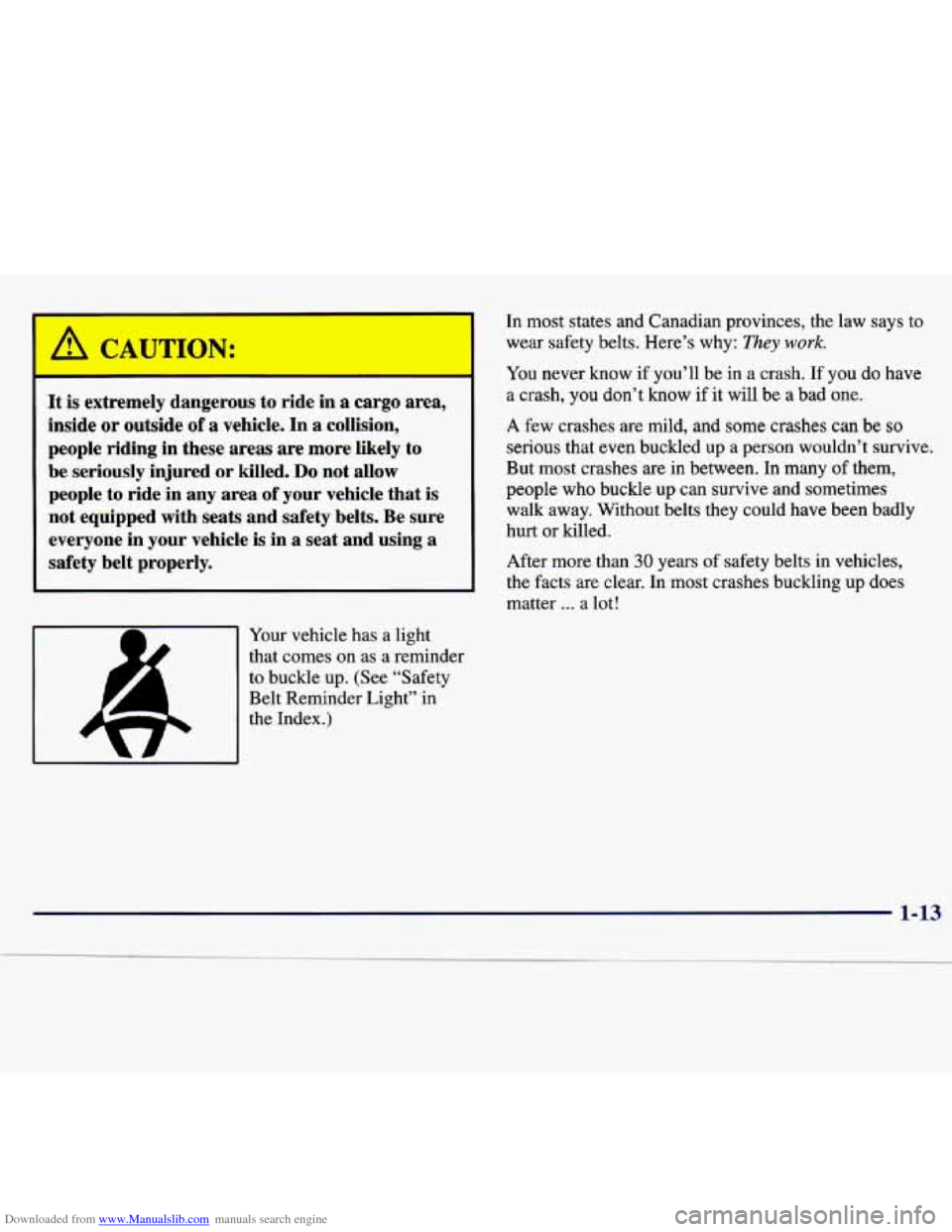
Downloaded from www.Manualslib.com manuals search engine .I .. ..
It is extremely dangerous to ride in a cargo area,
inside or outside
of a vehicle. In a collision,
people riding in these areas are more likely to
be seriously injured or killed.
Do not allow
people to ride in any area of your vehicle that is
not equipped with seats and safety belts. Be sure
everyone in your vehicle is in a seat and using a
safety belt properly.
In most states and Canadian provinces, the law says to
wear safety belts. Here’s why:
They work.
You never know if you’ll be in a crash. If you do have
a crash, you don’t know if it will be a bad one.
A few crashes are mild, and some crashes can be so
serious that even buckled up a person wouldn’t survive.
But most crashes
are in between. In many of them,
people who buckle
up can survive and sometimes
walk away. Without belts they could have been badly
hurt or killed.
After more than
30 years of safety belts in vehicles,
the facts
are clear. In most crashes buckling up does
matter
... a lot!
Your vehicle has
a light
that comes on as a reminder
to buckle up. (See “Safety
Belt Reminder Light” in
the Index.)
1-13